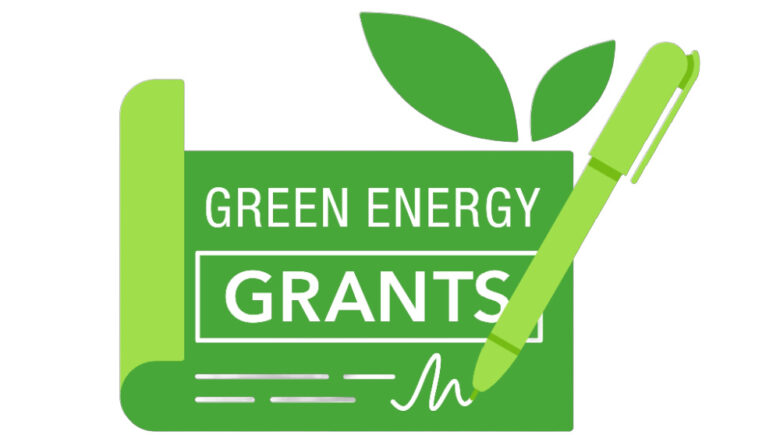Table of Contents
Green energy grants accelerate the shift to a low-carbon economy. They provide non-repayable funds for renewable energy, energy efficiency, and clean-tech ventures. By covering a portion of project costs, grants reduce financial risk and make sustainable initiatives more viable.
Understanding Green Energy Grants
Green energy grants come from governments, multilateral agencies, foundations, and private entities. Unlike loans, they do not require repayment. This makes them ideal for startups, non-profits, public bodies, and SMEs facing high upfront costs.
Grants may target specific technologies—solar PV, wind turbines, geothermal systems, bioenergy—or broader goals like smart grids and energy storage. Some prioritize social equity by funding projects in underserved communities. Others focus on industrial decarbonization and large-scale infrastructure.
Major Funding Sources
Several key providers distribute green energy grants:
- National Governments: Many countries embed renewable incentives in climate action plans. For example, the U.S. Department of Energy’s Solar Energy Technologies Office funds PV research and deployment at scale. States also offer rebates and performance-based incentives for residential solar.
- International Organizations: Agencies such as IRENA and the World Bank offer grants and technical support for renewable projects in developing regions. They emphasize policy development and capacity building .
- Regional and Local Authorities: Municipalities fund community-scale solar, energy-efficient building upgrades, and green infrastructure. These programmes often require partnerships among public agencies, non-profits, and private developers.
- Foundations and NGOs: Philanthropic bodies—like the Rockefeller Foundation—support clean-tech research, demonstration projects, and community energy in areas with limited financing options.
Eligibility and Objectives
Grant criteria vary by programme but typically include:
- Project Scope: Renewable generation, grid integration, efficiency upgrades, feasibility studies, and capacity-building workshops.
- Applicant Profile: Public entities, non-profits, academic institutions, SMEs, or consortia that demonstrate execution capacity. Equity-focused grants often favor applicants from disadvantaged or rural areas.
- Technical and Financial Plans: Detailed specifications, cost estimates, timelines, risk-management strategies, and environmental impact forecasts. Many grants require matching funds or co-funding commitments.
- Performance Metrics: Measurable targets—such as annual CO₂ reductions, energy savings, capacity additions in megawatts, or number of households served.
Follow these steps to improve your chances:
- Identify Relevant Grants
Search government portals (e.g., Grants.gov) and international databases (e.g., IRENA’s funding atlas) for programmes matching your goals. - Craft a Clear Proposal
Explain your project’s purpose, objectives, and technical approach. Highlight innovations—smart controls or hybrid systems—and quantify expected benefits. - Gather Supporting Documents
Include feasibility studies, technical drawings, financial models, letters of support, and evidence of co-funding. For community projects, attach partnership agreements. - Ensure Regulatory Compliance
Address all permits and show alignment with national climate targets, such as those under the Paris Agreement. - Plan for Monitoring
Design a monitoring, reporting, and verification (MRV) framework. Schedule interim and final reports to maintain transparency.
Maximizing Impact Beyond Funding
To sustain benefits, consider these practices:
- Form Public–Private Partnerships
Collaborate with governments, investors, and research institutions to share expertise and resources. - Design for Scalability
Use modular systems that allow future expansions—adding PV panels or batteries as demand grows. - Engage Local Stakeholders
Involve communities early to build support, create jobs, and ensure local maintenance capacity. - Share Success Stories
Publish case studies and lessons learned to attract further funding and replicate projects elsewhere.
Case Study: Rural Community Solar
In 2023, a Midwest consortium won a $2 million federal grant for a community solar array serving low-income households. The project paired solar PV with battery storage. As a result, it shifted peak loads and bolstered grid reliability.
Within 18 months, the array generated over 5 GWh of clean energy. It cut household bills by 25% and avoided approximately 3,000 tonnes of CO₂ annually .
Best Practices in Grant Management
Effective administration ensures long-term credibility:
- Keep Detailed Records
Track expenditures, procurements, and milestones. Solid documentation eases audits and boosts funder trust. - Monitor Policy Changes
Stay updated on energy regulations, tax credits, and interconnection standards that affect project costs. - Pursue Continuous Improvement
Analyze performance data to optimize operations—adjust battery dispatch or fine-tune controls. Document enhancements for future proposals. - Build Industry Networks
Join forums, workshops, and peer networks to exchange insights and discover new grant opportunities.
Conclusion
Green energy grants are vital for driving renewable energy and sustainable infrastructure. By selecting the right programmes, crafting strong proposals, and managing projects effectively, stakeholders can unlock essential funding. Whether implementing community solar, retrofitting public buildings, or pioneering storage technologies, grants empower organizations to deliver both environmental and economic gains.
References
- International Renewable Energy Agency (IRENA). “Renewable Energy Funding Opportunities.” IRENA, 2024. https://www.irena.org/funding-opportunities
- U.S. Department of Energy, Office of Energy Efficiency & Renewable Energy. “Community Solar Projects: Best Practices and Case Studies.” DOE, 2023. https://www.energy.gov/eere/solar/community-solar-case-studies
- European Commission. “Horizon Europe: Clean Energy Funding.” European Commission, 2024. https://ec.europa.eu/info/funding-tenders/opportunities/portal/screen/opportunities/topic-details/horizon-cl4-2022-eg-01
Table of Contents
Green energy grants accelerate the shift to a low-carbon economy. They provide non-repayable funds for renewable energy, energy efficiency, and clean-tech ventures. By covering a portion of project costs, grants reduce financial risk and make sustainable initiatives more viable.
Understanding Green Energy Grants
Green energy grants come from governments, multilateral agencies, foundations, and private entities. Unlike loans, they do not require repayment. This makes them ideal for startups, non-profits, public bodies, and SMEs facing high upfront costs.
Grants may target specific technologies—solar PV, wind turbines, geothermal systems, bioenergy—or broader goals like smart grids and energy storage. Some prioritize social equity by funding projects in underserved communities. Others focus on industrial decarbonization and large-scale infrastructure.
Major Funding Sources
Several key providers distribute green energy grants:
- National Governments: Many countries embed renewable incentives in climate action plans. For example, the U.S. Department of Energy’s Solar Energy Technologies Office funds PV research and deployment at scale. States also offer rebates and performance-based incentives for residential solar.
- International Organizations: Agencies such as IRENA and the World Bank offer grants and technical support for renewable projects in developing regions. They emphasize policy development and capacity building .
- Regional and Local Authorities: Municipalities fund community-scale solar, energy-efficient building upgrades, and green infrastructure. These programmes often require partnerships among public agencies, non-profits, and private developers.
- Foundations and NGOs: Philanthropic bodies—like the Rockefeller Foundation—support clean-tech research, demonstration projects, and community energy in areas with limited financing options.
Eligibility and Objectives
Grant criteria vary by programme but typically include:
- Project Scope: Renewable generation, grid integration, efficiency upgrades, feasibility studies, and capacity-building workshops.
- Applicant Profile: Public entities, non-profits, academic institutions, SMEs, or consortia that demonstrate execution capacity. Equity-focused grants often favor applicants from disadvantaged or rural areas.
- Technical and Financial Plans: Detailed specifications, cost estimates, timelines, risk-management strategies, and environmental impact forecasts. Many grants require matching funds or co-funding commitments.
- Performance Metrics: Measurable targets—such as annual CO₂ reductions, energy savings, capacity additions in megawatts, or number of households served.
Follow these steps to improve your chances:
- Identify Relevant Grants
Search government portals (e.g., Grants.gov) and international databases (e.g., IRENA’s funding atlas) for programmes matching your goals. - Craft a Clear Proposal
Explain your project’s purpose, objectives, and technical approach. Highlight innovations—smart controls or hybrid systems—and quantify expected benefits. - Gather Supporting Documents
Include feasibility studies, technical drawings, financial models, letters of support, and evidence of co-funding. For community projects, attach partnership agreements. - Ensure Regulatory Compliance
Address all permits and show alignment with national climate targets, such as those under the Paris Agreement. - Plan for Monitoring
Design a monitoring, reporting, and verification (MRV) framework. Schedule interim and final reports to maintain transparency.
Maximizing Impact Beyond Funding
To sustain benefits, consider these practices:
- Form Public–Private Partnerships
Collaborate with governments, investors, and research institutions to share expertise and resources. - Design for Scalability
Use modular systems that allow future expansions—adding PV panels or batteries as demand grows. - Engage Local Stakeholders
Involve communities early to build support, create jobs, and ensure local maintenance capacity. - Share Success Stories
Publish case studies and lessons learned to attract further funding and replicate projects elsewhere.
Case Study: Rural Community Solar
In 2023, a Midwest consortium won a $2 million federal grant for a community solar array serving low-income households. The project paired solar PV with battery storage. As a result, it shifted peak loads and bolstered grid reliability.
Within 18 months, the array generated over 5 GWh of clean energy. It cut household bills by 25% and avoided approximately 3,000 tonnes of CO₂ annually .
Best Practices in Grant Management
Effective administration ensures long-term credibility:
- Keep Detailed Records
Track expenditures, procurements, and milestones. Solid documentation eases audits and boosts funder trust. - Monitor Policy Changes
Stay updated on energy regulations, tax credits, and interconnection standards that affect project costs. - Pursue Continuous Improvement
Analyze performance data to optimize operations—adjust battery dispatch or fine-tune controls. Document enhancements for future proposals. - Build Industry Networks
Join forums, workshops, and peer networks to exchange insights and discover new grant opportunities.
Conclusion
Green energy grants are vital for driving renewable energy and sustainable infrastructure. By selecting the right programmes, crafting strong proposals, and managing projects effectively, stakeholders can unlock essential funding. Whether implementing community solar, retrofitting public buildings, or pioneering storage technologies, grants empower organizations to deliver both environmental and economic gains.
References
- International Renewable Energy Agency (IRENA). “Renewable Energy Funding Opportunities.” IRENA, 2024. https://www.irena.org/funding-opportunities
- U.S. Department of Energy, Office of Energy Efficiency & Renewable Energy. “Community Solar Projects: Best Practices and Case Studies.” DOE, 2023. https://www.energy.gov/eere/solar/community-solar-case-studies
- European Commission. “Horizon Europe: Clean Energy Funding.” European Commission, 2024. https://ec.europa.eu/info/funding-tenders/opportunities/portal/screen/opportunities/topic-details/horizon-cl4-2022-eg-01







